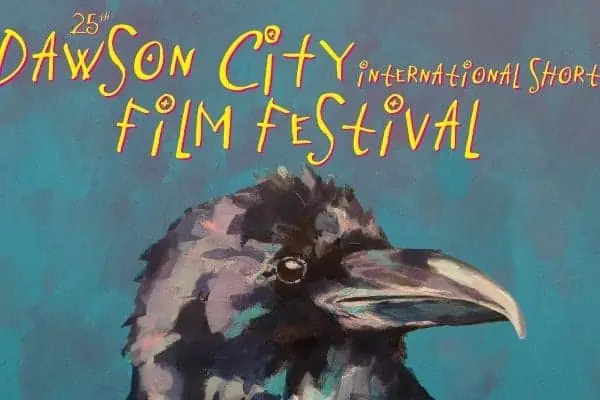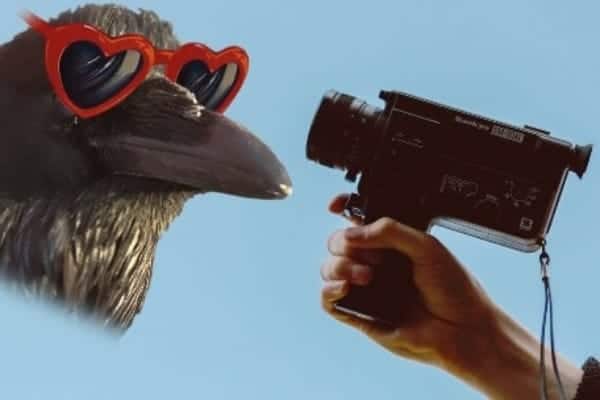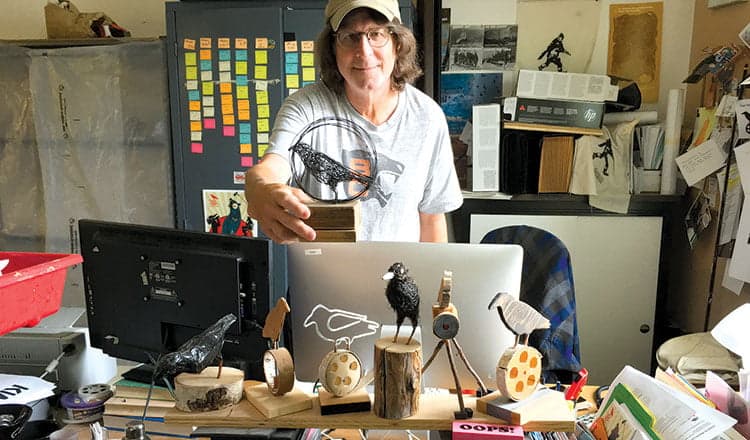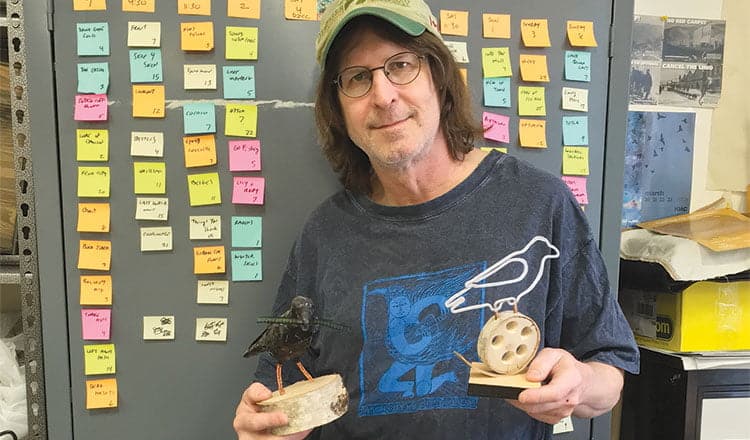It’s a little festival with a big handle: Dawson City International Short Film Festival, March 20 to 23, 2008.
But compared to festivals I’ve attended from Toronto to Chicago, from Tromso, Norway to Cannes, the DCISFF offers a plethora of programs, an exhilarating assortment of guests and the fun and flavour of a Yukon celebration.
When Lee Demarbre scheduled a movie shoot in Mexico a few years ago, he didn’t think he’d have trouble attracting a crew. In January, every sane Canadian would prefer to be in Mexico, right? But Dan Sokolowski turned him down; he chose to go to Dawson City to produce the DCISFF instead.
Now Demarbre will get some insight into that choice. He’s been invited to the Dawson Film Festival as this year’s featured guest.
What kind of director makes films with titles like Jesus Christ Vampire Hunter, and Harry Knuckles and The Pearl Necklace?
Lee Gordon Demarbre is called a “genre” filmmaker. Since the 90s, he’s had great success spoofing other genres like martial arts and horror films. He keeps budgets low and offers sponsors on-screen credit as “Associate Producer” in exchange for their cash contributions.
Instead of cuing up for competitive Telefilm funding and distributor agreements, he shoots films on a shoestring budget with small crews and then markets them himself. Jesus Christ Vampire Slayer was made for $40,000. The year he released the film, 2001, it was the highest grossing English-language Canadian film, relative to budget.
At this year’s Dawson City International Short Film Festival, audiences will be treated to Demarbre’s newest release, The Dead Sleep Easy, the made-in-Mexico movie that follows a professional wrestling tour.
Demarbre will also host a master class and show a rough cut of his new documentary, Vampiro: Villain, Hero, Angel.
This is a year of many firsts.
For the first time, filmmakers could enter their films through an on-line festival registry, Without-a-Box. This increased submissions to an all-time high of 300 entries.
It was a challenge to screen everything. For three months, two nights a week, Dawson’s Selection Committee watched and rated films. Even when it was 50 below, attendance at screenings was always high.
Based on their recommendations and other prerogatives, Festival Producer Dan Sokolowski has scheduled the films into six programs.
The Festival has a newly created Youth Category for filmmakers 16 years and younger. This was inspired by entries from the Youth Arts Enrichment program and the Culture Quest students’ films from communities around the territory.
Sam Crocker, of Dawson City, who is in Grade 2, is developing quite a filmmography. This year we’ll see Sam’s third entry. Sam’s five-year-old sister, Kate, narrates his film.
Now he’s dragged his parents into making films as well. Suzanne Crocker and Gerard Parsons will follow their son’s example and show their first films this year.
Plans are underway to have the first ever outdoor screening. Pending approval from the City of Dawson, films will be projected onto the window of the Odd Gallery at 7 p.m. on Friday. For those who don’t want to venture out into the cold, the screening will be visible from the bar across the street at Bombay Peggy’s.
In years past, there were few entries from Yukon filmmakers. That’s not a problem this year. Eleven films are competing for prizes in the MITY (Made in the Yukon) Emerging category and nine are competing for the MITY Professional awards. One of these, River of Life by Werner Walcher, follows breast cancer survivors competing on the Yukon River Quest, a canoe race on the Yukon River.
The Tromso International Film Festival in Norway is the most northerly in the world; DCISFF is Canada’s most northerly film fest. For nine years there has been an annual exchange of films.
In total, Dawson will screen close to 50 films from 11 countries. Sokolowski observes that entries from Canada have been very strong. Films are well written and skilfully edited with high production values, including several French-language films from Quebec.
Canadian animation is also strong. A program from the Ottawa International Animation Festival includes the Oscar-nominated short, I Met the Walrus. Josh Raskin made this animation to illustrate the interview he had with John Lennon when he was 14 years old.
Another Oscar-nominated animation, Madame Tutli-Putli, will also be shown.
Kerry Barber has again programmed First Nations films, this year with input from Darryl Nepnaik. One of their choices, Issaittuq, directed by Bruce Haulli, was produced by Zacharias Kunuk and his Isuma studio in Nunavut.
A phenomenon this year is that several filmmakers have journeyed afar to make films in foreign countries. Erika MacPherson, from Manitoba, made You are Here/We are There in Iceland. A U.K. filmmaker shot Tales From the Arctic Circle in Nunavut, an American shot in Argentina, Canadians filmed in Senegal and Iceland.
At last year’s DCISFF, Bridget Farr attended for the screening of her experimental short, The Space Between Us. Immediately after the Festival, Farr and Chris Redman left for Burundi in central Africa, where they set up the Burundi Film Centre.
Their drama, Basket Boy, tells of a woman whose baby is delivered by C-section. When her husband can’t afford to pay the hospital bill, mother and child are held hostage. The parents smuggle their baby out in a lunch basket.
Directing Actors in Film is an interactive workshop that the Festival offers this year. Karen Hines, an award-winning actor, writer and filmmaker from Calgary, will join forces with Yukoners Celia McBride and Lulu Keating. All three have films in the festival.
Dan Monceaux and Emma Sterling of Australia will be Klondike Institute of Art and Culture (KIAC) artists in residence during the festival. Monceaux’s film, A Shift in Perception, won the Best of the Fest Lodestar Award last year.
Their new project, Supermarket, will be screened. It shows footage of their recent North American tour and will possibly include new footage shot in the Yukon.
Screenings are held at KIAC’s old Odd Fellows Hall on the corner of Princess Street and Second Avenue.
Even the food available at the concession stand is innovative. In addition to the usual assortment of baked goods, this year audiences will be able to purchase sushi, crepes, fajitas and quiche.
Complete details can be viewed on the website at www.dawsonfilmfest.com.




